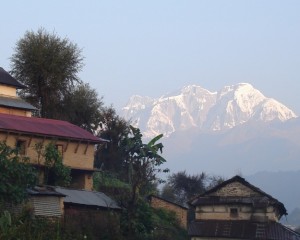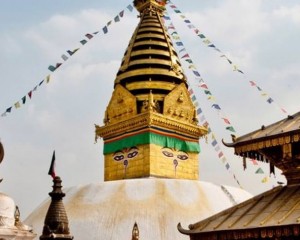Can I Do Everest Base Camp Trek Alone: A Complete Guide
The Everest Base Camp trek is a dream for many trekkers. The trail is adventurous with each turn allowing us to spike our adrenaline. But can you do the Everest base camp alone?
The iconic trek takes you through stunning landscapes, from lush forests, and majestic mountains all the way to the base of the world's highest peak, Mount Everest.
Well, it is one of the most challenging trekking routes. However, with the proper preparation, anyone can be part of this trek. Without wasting any time let us dive into how to prepare for the Everest base camp trek.
How should I plan for Everest base camp?
So, you're all set to take on the challenge of trekking to Everest Base Camp solo?
But first, let us make a checklist of the preparation you have to do for the Everest Base Camp trek.

Take note of the route and Itinerary
The route and itinerary are the first things you should know, as there are many routes, either the Everest Base Camp Trek or the Short Everest Base Camp Trek and many more. So note down where you're going and what to expect along the way.
The Everest Base Camp trek starts in Lukla. Along the way, it takes you through beautiful villages, valleys, and mountain passes before reaching the base camp. Make sure you check out the map and understand how far you'll be walking each day and how high you'll be climbing.
Necessary Permits and Fees
To trek in the Everest region, you need to get some permits from the Nepalese government. They're called TIMS (Trekkers' Information Management System) cards and Sagarmatha National Park entry permits. Remember to budget for these permits and keep them with you during your trek.

Seasonal Considerations and Weather
The weather in the Everest region changes a lot depending on the time of year. The best trek times are spring (March to May) and autumn (September to November).
But be prepared for sudden changes, like snowstorms and strong winds, especially at higher altitudes. Check out the weather forecast before you go, and pack accordingly.

Physical Fitness and Training Requirements
Trekking to Everest Base Camp is tough, so you need to be in decent shape. You'll be walking a lot every day, sometimes uphill, sometimes downhill. Your physical fitness should be strong for you to conquer the trek.
Strength training exercises are beneficial for your muscles. Start slow and gradually increase the intensity of your workouts.
Is the Everest Base Camp trek safe for solo travelers?
Trekking to Everest Base Camp solo is safe for beginners. However, it requires careful planning, preparation, and awareness of potential risks. Let us break down some factors to consider.
Finding way
While the trails to Everest Base Camp are well-marked and well-traveled, solo trekkers need to be comfortable with navigation and have a basic understanding of the route.

Altitude Sickness
One of the primary risks of trekking in high altitudes is altitude sickness, also known as Acute Mountain Sickness (AMS). Solo trekkers need to understand the symptoms of AMS and acclimatize properly to minimize the risk.
Emergency Preparation
Solo trekkers should be prepared to handle emergencies on their own, including injuries, illness, or adverse weather conditions. Carrying a first aid kit, and communication device, and knowing emergency procedures are essential.

Logistics
Managing logistics such as permits, accommodations, and transportation can be more challenging for solo trekkers. Reputed agencies can help you with finding all the required accommodations, permits, and another required thing.
Local Support
Despite trekking solo, there are often other trekkers and local guides along the route who can provide assistance if needed. Along the route, you should maintain friendly behavior with the trekkers and guides.

How does Nepal Vsiion Treks help the solo trekkers with the Everest base Camp trek?
Nepal Vision Treks has a team of expert guides that helps manage logistical details like permits and accommodations. Their experienced guides make sure solo trekkers stay on track, avoid dangers like altitude sickness, and understand local customs.
They handle all the tricky logistics for solo trekkers. So that they can focus on enjoying the adventure. Plus, if anything goes wrong, like getting sick or injured, Nepal Vision Treks is there to help with evacuation or other assistance.
To wrap up, For solo trekkers, going to Everest Base Camp is a lifetime adventure. Altitude sickness and planning stuff like where to stay and how to stay safe are important. With the right prep and maybe some help from Nepal Vision treks it is possible.
Going solo means you get to set your own pace and really dive in the amazing scenery and culture.The Everest Base Camp solo trek is the ultimate jackpot of cool experiences!
A slow and steady trekking trip is your way to enjoy the trek and make a long lasting memory.
FAQS









